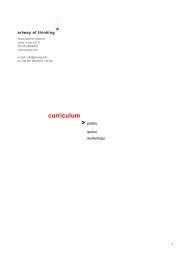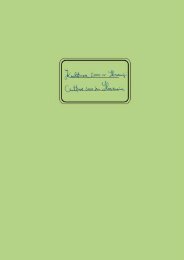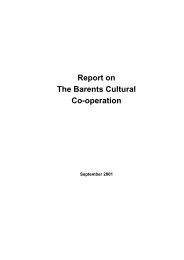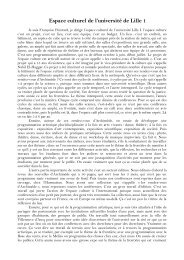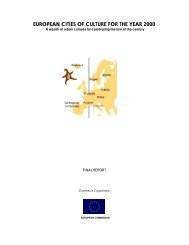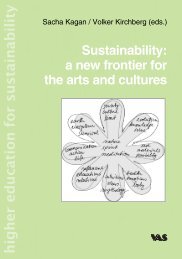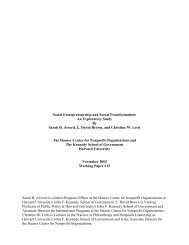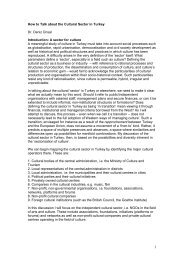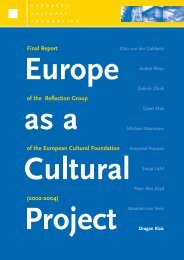A guide to the export and import of cultural goods between Russia ...
A guide to the export and import of cultural goods between Russia ...
A guide to the export and import of cultural goods between Russia ...
Create successful ePaper yourself
Turn your PDF publications into a flip-book with our unique Google optimized e-Paper software.
Introduction<br />
Export controls apply <strong>to</strong> anyone who wants <strong>to</strong> take a <strong>cultural</strong> object, as defined under <strong>the</strong><br />
legislation, out <strong>of</strong> a country. They apply <strong>to</strong> individuals, non-pr<strong>of</strong>it <strong>and</strong> commercial bodies,<br />
public institutions <strong>and</strong> o<strong>the</strong>r organisations. The applicant’s age, citizenship, nationality<br />
<strong>and</strong> place <strong>of</strong> residence are not relevant. They apply whe<strong>the</strong>r you are taking such an object<br />
out permanently or for a short period. For example, <strong>the</strong> EU <strong>export</strong> licensing legislation<br />
(which covers older, valuable musical instruments) applies <strong>to</strong> musicians <strong>of</strong> all ages, even<br />
children <strong>and</strong> students who want <strong>to</strong> take <strong>the</strong>ir musical instrument on holiday from an EU<br />
member state <strong>to</strong> a non-EU country.<br />
All countries have <strong>the</strong>ir own particular focus <strong>and</strong> priority in devising <strong>the</strong>ir <strong>export</strong> controls.<br />
The national <strong>cultural</strong> heritage legislation aims <strong>to</strong> safeguard <strong>cultural</strong> <strong>goods</strong> <strong>of</strong> national significance<br />
<strong>and</strong> keep <strong>the</strong>m in <strong>the</strong> country. This is interpreted in various ways. It may apply<br />
<strong>to</strong> <strong>goods</strong> made in <strong>the</strong> country or created by an artist from that country; it could cover an<br />
art work representing an <strong>import</strong>ant national his<strong>to</strong>ric figure; it might include documents or<br />
objects with o<strong>the</strong>r national significance.<br />
Sweden, for example, has <strong>export</strong> restrictions which apply <strong>to</strong> <strong>cultural</strong> <strong>goods</strong> made in Sweden<br />
or made elsewhere by a Swede. Irel<strong>and</strong> has <strong>export</strong> controls for art works made in<br />
Irel<strong>and</strong>. Both countries also restrict <strong>the</strong> movement <strong>of</strong> <strong>cultural</strong> <strong>goods</strong> which are located<br />
in <strong>the</strong> country, wherever <strong>the</strong>y were made <strong>and</strong> whoever made <strong>the</strong>m. Ano<strong>the</strong>r example <strong>of</strong><br />
a particular national interest is <strong>the</strong> United Kingdom where a portrait <strong>of</strong> a British his<strong>to</strong>rical<br />
person is subject <strong>to</strong> special measures.<br />
In common with several EU countries, <strong>the</strong> heritage protection legislation in <strong>Russia</strong> covers<br />
all <strong>cultural</strong> <strong>goods</strong> (or “<strong>cultural</strong> values”) which are more than 50 years old. Items which are<br />
particularly significant for <strong>Russia</strong>n <strong>cultural</strong> heritage, such as icons, old coins, medals <strong>and</strong><br />
musical instruments, are mentioned specifically. Unlike <strong>the</strong> EU <strong>export</strong> licensing system<br />
which relies on a combination <strong>of</strong> age or age <strong>and</strong> value, in <strong>Russia</strong> it is age that is <strong>the</strong> sole<br />
deciding fac<strong>to</strong>r for whe<strong>the</strong>r objects are considered <strong>to</strong> be <strong>cultural</strong> <strong>goods</strong> <strong>and</strong> <strong>the</strong>refore<br />
subject <strong>to</strong> <strong>export</strong> <strong>and</strong> <strong>import</strong> controls.<br />
For some European countries with an <strong>import</strong>ant <strong>and</strong> substantial archaeological heritage,<br />
e.g. Greece <strong>and</strong> Cyprus, <strong>the</strong> main focus <strong>of</strong> <strong>the</strong> legislation is on <strong>export</strong> control <strong>of</strong> movable<br />
archaeological heritage. Indeed, <strong>the</strong> <strong>export</strong> <strong>of</strong> any archaeological object may be forbidden<br />
by law. There is a long his<strong>to</strong>ry <strong>of</strong> such objects being s<strong>to</strong>len, destroyed or illegally moved<br />
<strong>and</strong> this has created a determination <strong>to</strong> keep <strong>the</strong> existing archaeological heritage intact by<br />
means <strong>of</strong> legislation <strong>and</strong> enforcement.<br />
Inven<strong>to</strong>ries <strong>of</strong> <strong>cultural</strong> <strong>goods</strong> <strong>of</strong> national <strong>import</strong>ance exist in many countries <strong>and</strong> <strong>the</strong>y frequently<br />
act as <strong>the</strong> legal basis for decisions on <strong>export</strong> controls. In o<strong>the</strong>r countries, where<br />
inven<strong>to</strong>ries do not exist, national legislation sets out criteria for <strong>the</strong> evaluation <strong>of</strong> <strong>cultural</strong><br />
<strong>goods</strong> <strong>of</strong> particular <strong>import</strong>ance. A process <strong>of</strong> expertise is carried out on an individual basis<br />
for <strong>export</strong> applications, following <strong>the</strong> criteria.<br />
Fur<strong>the</strong>r details on all <strong>the</strong> national legislative frameworks <strong>and</strong> procedures can be found in<br />
<strong>the</strong> country chapters.<br />
12



